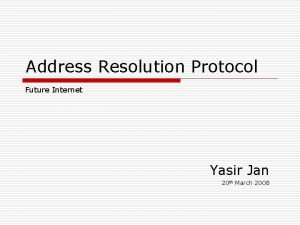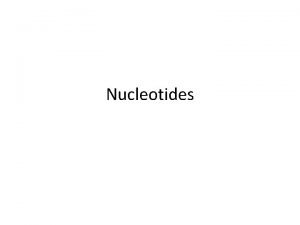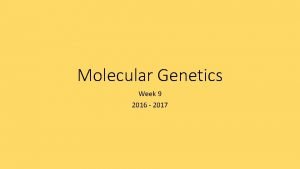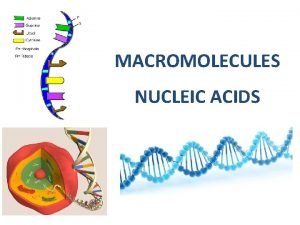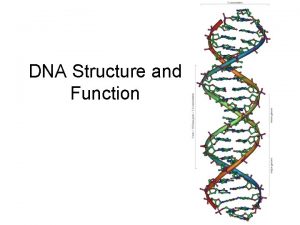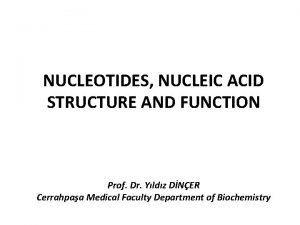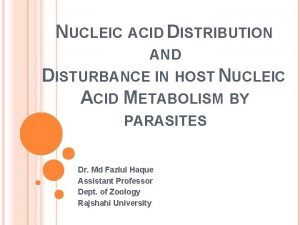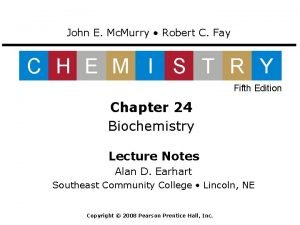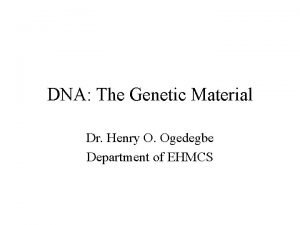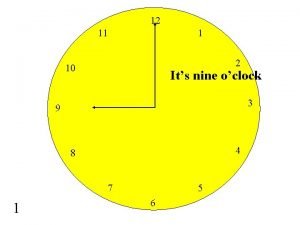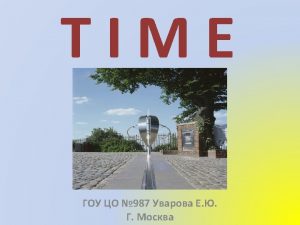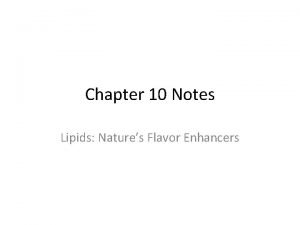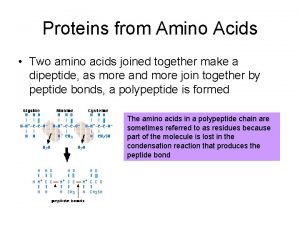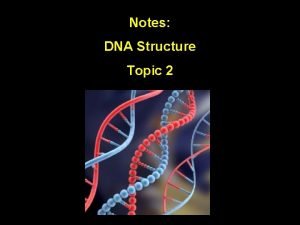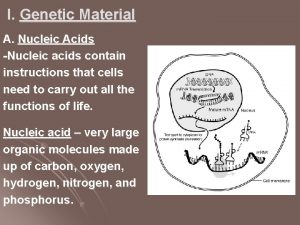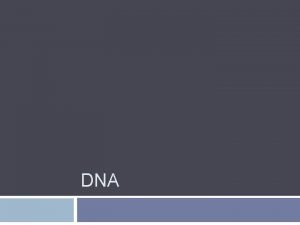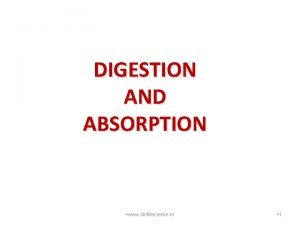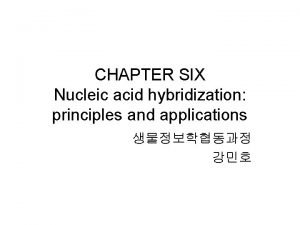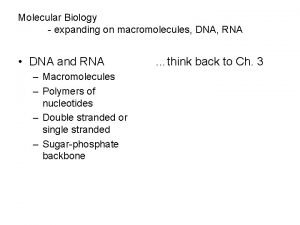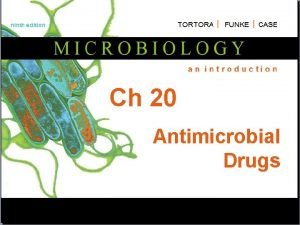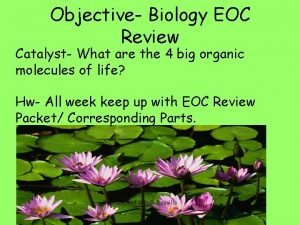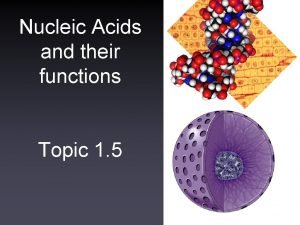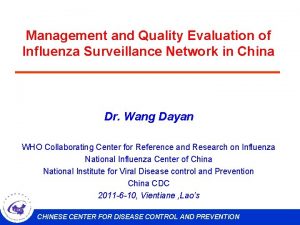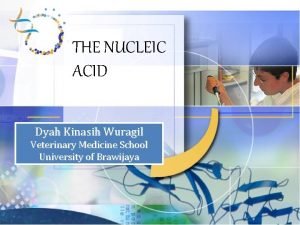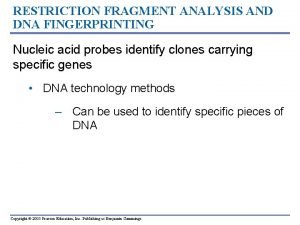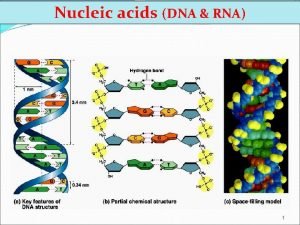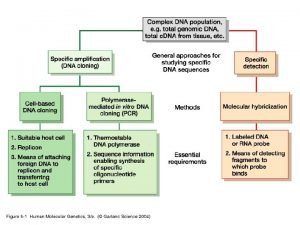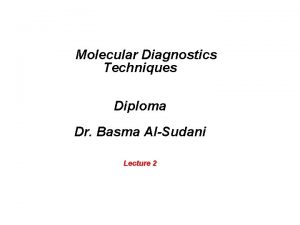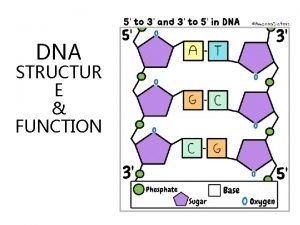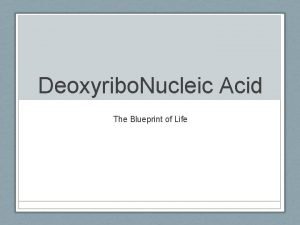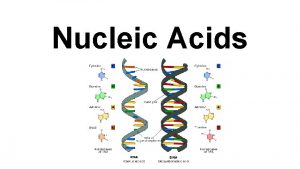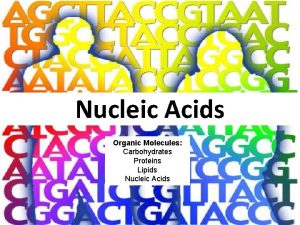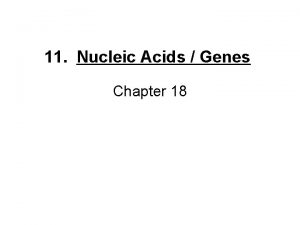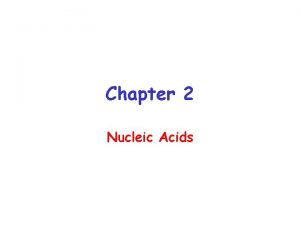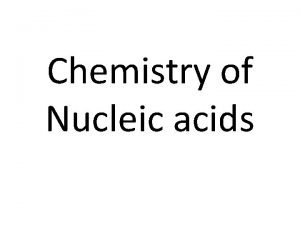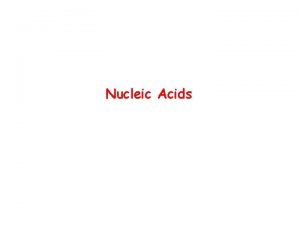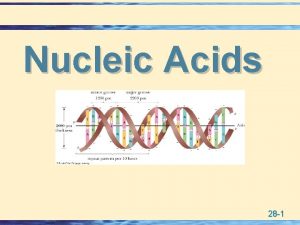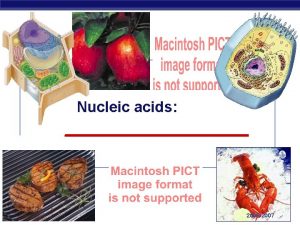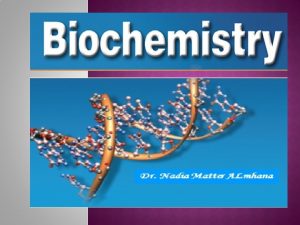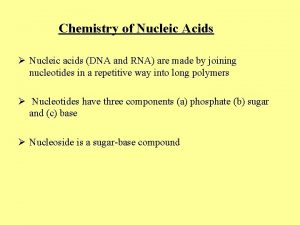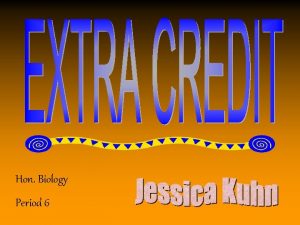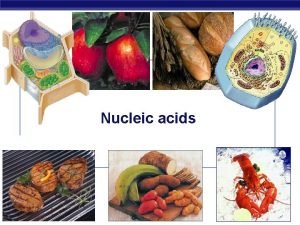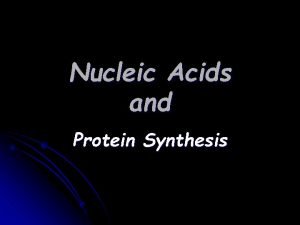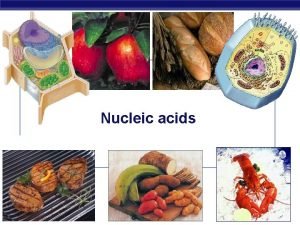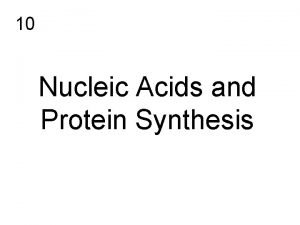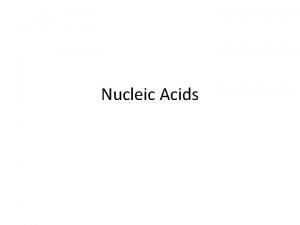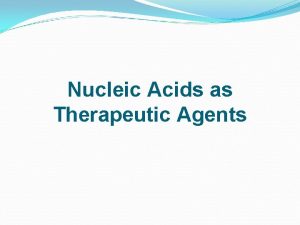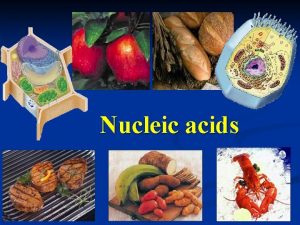Chapter Twenty Two Nucleic Acids Lipids contd CO






































- Slides: 38

Chapter Twenty Two Nucleic Acids

Lipids cont’d → CO 22. 1 Human egg and sperm. Dr. Nikos / James Burns / Phototake Copyright © Houghton Mifflin Company. All rights reserved. 2

Lipids cont’d → Fig. 22. 1 Molecule of Adenine, a nitrogen-containing heterocyclic base present in both RNA and DNA. Copyright © Houghton Mifflin Company. All rights reserved. 3

Lipids cont’d ← Fig. 22. 2 Two purine bases and three pyrimidine bases are found in the nucleotides present in nucleic acids. Copyright © Houghton Mifflin Company. All rights reserved. 4

Lipids cont’d Table 22. 1 Copyright © Houghton Mifflin Company. All rights reserved. 5

Lipids cont’d CAG 22. 1 Copyright © Houghton Mifflin Company. All rights reserved. 6

Lipids cont’d Fig. 22. 3 The general structure of a nucleic acid in terms of nucleotide subunits. Copyright © Houghton Mifflin Company. All rights reserved. 7

Lipids cont’d ← Fig. 22. 4 (a) The generalized structure of a nucleic acid. (b) The specific backbone structure for a deoxyribonucleic acid (DNA). (c) The specific backbone structure for a ribonucleic acid (RNA). Copyright © Houghton Mifflin Company. All rights reserved. 8

Lipids cont’d → Fig. 22. 5 A four-nucleotide-long segment of DNA. Copyright © Houghton Mifflin Company. All rights reserved. 9

Lipids cont’d Fig. 22. 6 A comparison of the primary structures of nucleic acids and proteins. Copyright © Houghton Mifflin Company. All rights reserved. 10

Lipids cont’d → Fig. 22. 7 A schematic drawing of the DNA double helix that emphasizes the hydrogen bonding between bases on the two chains. Copyright © Houghton Mifflin Company. All rights reserved. 11

Lipids cont’d ← Fig. 22. 8 Hydrogen bonding possibilities Copyright © Houghton Mifflin Company. All rights reserved. 12

Lipids cont’d Fig. 22. 9 DNA replication Copyright © Houghton Mifflin Company. All rights reserved. 13

Lipids cont’d Fig. 22. 10 One strand of DNA grows continuously in the direction of the unwinding, and the other grows in the opposite direction. Copyright © Houghton Mifflin Company. All rights reserved. 14

Lipids cont’d → Fig. 22. 11 DNA replication usually occurs at multiple sites within a molecule, and the replication is bidirectional from these sites. Copyright © Houghton Mifflin Company. All rights reserved. 15

Lipids cont’d ← Fig. 22. 12 Identical twins share identical physical characteristics because they received identical DNA from their parents. © Erica Stone / Peter Arnold, Inc. Copyright © Houghton Mifflin Company. All rights reserved. 16

Lipids cont’d CAG 22. 2 Copyright © Houghton Mifflin Company. All rights reserved. 17

Lipids cont’d Fig. 22. 13 A hairpin loop is produced when a single-stranded RNA doubles back on itself and complementary base pairing occurs. Copyright © Houghton Mifflin Company. All rights reserved. 18

Lipids cont’d Fig. 22. 14 An overview of types of RNA. Copyright © Houghton Mifflin Company. All rights reserved. 19

Lipids cont’d → Fig. 22. 15 The transcription of DNA to form RNA involves an unwinding of a portion of the DNA double helix. Copyright © Houghton Mifflin Company. All rights reserved. 20

Lipids cont’d Fig. 22. 16 Heterogenous nuclear RNA contains both exons and introns. Copyright © Houghton Mifflin Company. All rights reserved. 21

Lipids cont’d Fig. 22. 17 An hn. RNA molecule containing four exons. Copyright © Houghton Mifflin Company. All rights reserved. 22

Lipids cont’d Table 22. 2 Copyright © Houghton Mifflin Company. All rights reserved. 23

Lipids cont’d ← Fig. 22. 18 A t. RNA molecule Copyright © Houghton Mifflin Company. All rights reserved. 24

Lipids cont’d → Fig. 22. 19 An aminoacyl-t. RNA synthetase has an active site for t. RNA and a binding site for the particular amino acid that is to be attached to that t. RNA. Copyright © Houghton Mifflin Company. All rights reserved. 25

Lipids cont’d ← Fig. 22. 20 The interaction between anticodon an codon. Copyright © Houghton Mifflin Company. All rights reserved. 26

Lipids cont’d → Fig. 22. 21 Ribosomes have structures that contain two subunits. Copyright © Houghton Mifflin Company. All rights reserved. 27

Lipids cont’d Fig. 22 Initiation of protein synthesis begins with the formation of an initiation complex. Copyright © Houghton Mifflin Company. All rights reserved. 28

Lipids cont’d → Fig. 22. 23 The process of translation that occurs during protein synthesis. Copyright © Houghton Mifflin Company. All rights reserved. 29

Lipids cont’d CC 22. 1 Copyright © Houghton Mifflin Company. All rights reserved. 30

Lipids cont’d ← Fig. 22. 24 Several ribosomes can simultaneously proceed along a single strand of m. RNA. Such a complex of m. RNA and ribosomes is called a polysome. Copyright © Houghton Mifflin Company. All rights reserved. 31

Lipids cont’d CAG 22. 3 Copyright © Houghton Mifflin Company. All rights reserved. 32

Lipids cont’d → Fig. 22. 25 Image of an influenza virus. NIBSC / SPL / Photo Researchers Copyright © Houghton Mifflin Company. All rights reserved. 33

Lipids cont’d ← Fig. 22. 26 Recombinant DNA is made by inserting a gene obtained from DNA of one organism into the DNA from another kind of organism. Copyright © Houghton Mifflin Company. All rights reserved. 34

Lipids cont’d → Fig. 22. 27 Cleavage patterns resulting from the use of a restriction enzyme that cleaves DNA between G and A bases. Copyright © Houghton Mifflin Company. All rights reserved. 35

Lipids cont’d ← Fig. 22. 28 The “sticky ends” of the cut plasmid and the gene are complementary and combine to form recombinant DNA. Copyright © Houghton Mifflin Company. All rights reserved. 36

Lipids cont’d → Fig. 22. 29 The basic steps of the polymerase chain reaction process. Copyright © Houghton Mifflin Company. All rights reserved. 37

Lipids cont’d ← Fig. 22. 30 Selected steps in the DNA sequencing procedure for the 10 base DNA segment 5’ AGCAGCTGGT 3’. Copyright © Houghton Mifflin Company. All rights reserved. 38
 Address contd
Address contd Building blocks of nucleic acids
Building blocks of nucleic acids Hystonic
Hystonic Nucleic acids concept map
Nucleic acids concept map The building block of nucleic acid.
The building block of nucleic acid. Nucleic acid structure
Nucleic acid structure Importance of nucleic acid
Importance of nucleic acid What is nucleic acid made of
What is nucleic acid made of Nucleotide vs nucleoside
Nucleotide vs nucleoside Nucleotides
Nucleotides What stores hereditary information
What stores hereditary information Function of nucleic acids
Function of nucleic acids Food rich in nucleic acid
Food rich in nucleic acid Nucleic acids
Nucleic acids Ehmcs
Ehmcs Ten past eleven
Ten past eleven Twenty past ten
Twenty past ten It's twenty-five to three
It's twenty-five to three Atom palm hydrogen
Atom palm hydrogen Acids and bases have two different faces
Acids and bases have two different faces Two amino acids joined
Two amino acids joined Dna structure labeled diagram
Dna structure labeled diagram Genetic material
Genetic material What is nucleic acid composed of
What is nucleic acid composed of Gastric glands
Gastric glands Principle of hybridization
Principle of hybridization Nucleic acid polymer
Nucleic acid polymer Beta-lactam-resistant pathogens
Beta-lactam-resistant pathogens Nucleic acid monomer
Nucleic acid monomer Nucleic
Nucleic Nucleic acid test
Nucleic acid test Infectious nucleic acid
Infectious nucleic acid Nucleic acid
Nucleic acid Dna fragment length
Dna fragment length Types of rna and dna
Types of rna and dna Nucleic acid
Nucleic acid Types of nucleic acid
Types of nucleic acid We love dna song
We love dna song Nucleic acid
Nucleic acid
